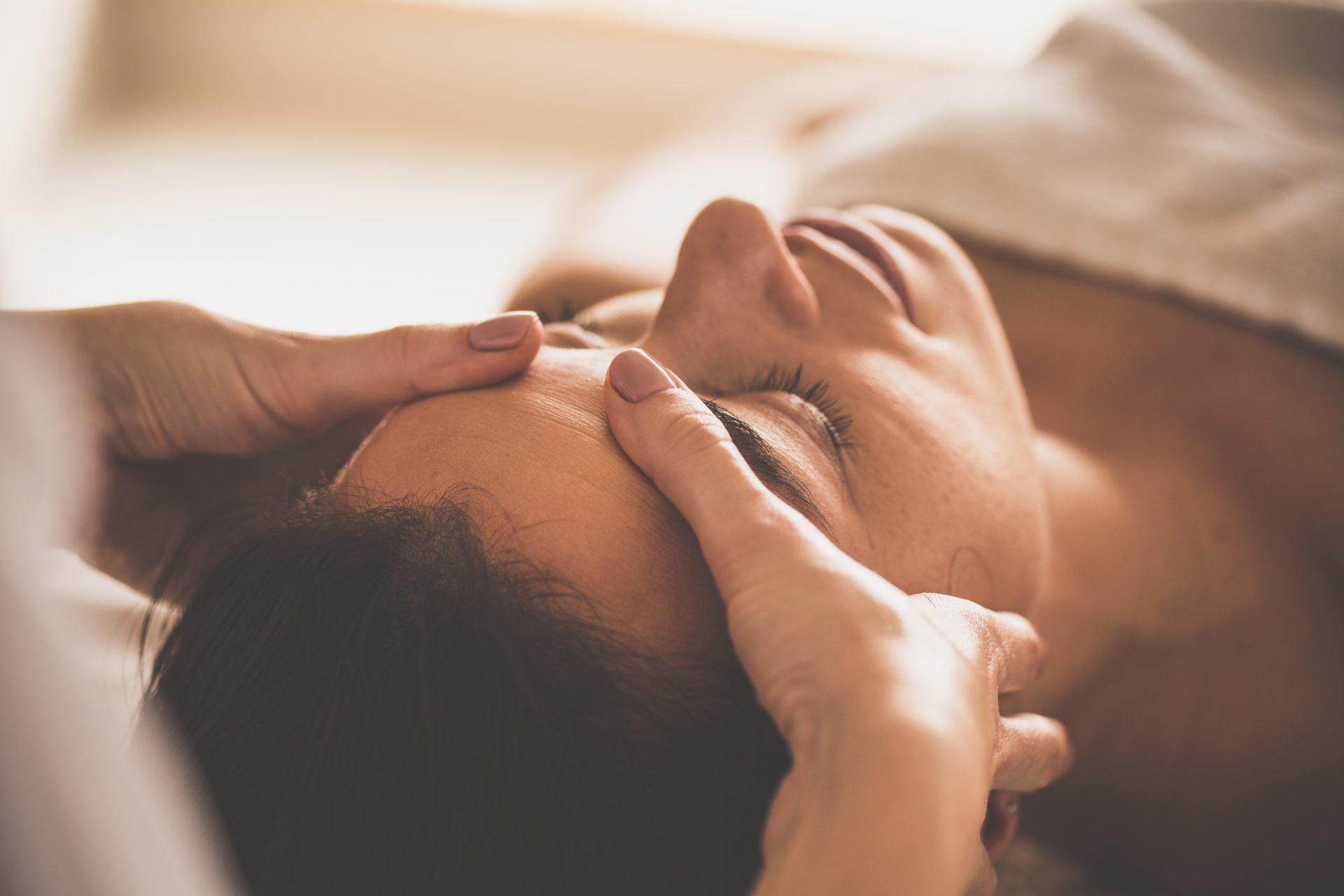Dating back to ancient Egypt, India and China, reflexology is a popular complementary health therapy that is thought to boost immune function, improve digestion and relieve stress, among other benefits. So what is it, and how does it work?
If the idea of a soothing foot massage is your idea of heaven, you’ll love reflexology. Deeply relaxing and restorative, the ancient practice is thought to have a myriad of benefits beyond a nice foot rub. Here’s a beginner’s guide to this holistic treat.
What is reflexology?
“Reflexology is a gentle, non-invasive and deeply relaxing holistic treatment,” explains wellness coach Basma Gale. “Thumb and finger pressure is applied to reflex points on the feet, hands or face, which activates and soothes the nervous system.”
It’s all about balance and flow
Much like the principles of reiki and Ayurveda, the core belief of reflexology is that the body, spirit and mind require balance, or homeostasis.
By applying targeted pressure to different areas of the body, the thinking is that we can balance and restore our organs and bodily systems via pressure points and massage.
Reflexology helps to maintain the flow of energy throughout the body, explains reflexologist Carole Railton. “Using maps of the body on the foot, certain parts of the foot receive different pressure sending energy to parts that need healing.”
Ticklish?
But don’t worry if you’re ticklish; you may be surprised to hear that the pressure used in reflexology won’t set off even the most sensitive of feet, according to Gale. You do, however, need to be comfortable with being touched, so if you’re highly sensitive, you might want to avoid this one.
Rest and digest
When the mind and body are relaxed, it’s believed that our parasympathetic nervous system is able to switch out of our active stress mode of fight or flight, and into ‘rest and digest’ mode.
“When a person feels stressed, their body blocks the natural flow of energy, which can cause imbalance and illness,” explains Railton. Being in a constant state of fight-or-flight has been linked to long-term health problems from obesity to high blood pressure, so learning how to kickstart our parasympathetic nervous system is one way of boosting wellbeing.
You may also like
An introduction to Ayurveda: how an ancient healing practice can enhance our modern lives
What are the benefits of reflexology?
“The benefits of reflexology are thought to include lowering anxiety levels, reducing pain, supporting digestion and inducing relaxation, which can improve your quality of sleep,” explains Gale.
“As a holistic treatment, reflexology treats the whole person and not the condition.It is complementary to medical treatment and reflexologists do not claim to diagnose or cure,” she continues.
And while there is some evidence that reflexology may help with the management of a range of conditions, including headaches, PMS, osteoarthritis, diabetes, high blood pressure and multiple sclerosis, it’s important to remember that it’s not backed by medical science.
You may also like
Reiki healing: what is it, what are the benefits and does it actually work?
“You’ll be hard pushed to find a qualified medical professional to endorse reflexology as a treatment, I’m afraid,” warns Dr Zoe Watson, GP and founder of wellbeing platform Wellgood Wellbeing. “It has no evidence base behind it, but if nothing else, it can be a relaxing treatment, which can in itself benefit your mental health.”
“Reflexology is a soft natural therapy,” agrees Railton, “and as it’s usually performed when you are lying down, I have never known anyone not to feel relaxed after a treatment.”

You might be practising it without even realising
Ever wrung your hands with nerves or excitement? That’s a very rudimentary form of reflexology right there. “I will always perform reflexology on my hands when I’m worried about anything,” agrees Railton. “It really helped me when I first started public speaking, as it helps to calm you and get your brain in its natural flow.”
For fast and easy relief of anxiety, try applying pressure to the ’Heart 7’ part of your hand – if you feel just below your wrist crease on the outer edge of your hand, there is a small dent. Massaging this area for one minute is believed to help to calm you down – certainly worth a try the next time you’re feeling overwhelmed.
How to start practising reflexology
While it’s always best to see a qualified practitioner, there are a range of YouTube tutorials and resources to guide you through some basic reflexology pressure points, from toe massage to relieve neck pain to relaxing your whole body before sleep.
And if you’ve ever used a foam roller, you’ll know just how relaxing releasing some muscle tension can be.
It’s not suitable for everyone
As with any other treatment, it’s worth checking your suitability and any contraindications beforehand.
“Reflexology isn’t recommended for anyone suffering from acute inflammation of the circulatory system, those susceptible to DVT or anyone with heart disease or heart problems,” advises Railton. “Similarly, any open wounds or sores are not treated and caution will be exercised if you are are pregnant or have any foot injuries.”
“If you’re being treated for any health condition, it’s always best to check suitability with your GP or medical professional,” agrees Gale.
It’s advisable to rest afterwards
“As it’s such a gentle treatment, it can often make you feel drowsy afterwards,” advises Railton, “so it’s best not to drink alcohol and take it easy driving afterwards.”
Images: Getty
Source: Read Full Article
